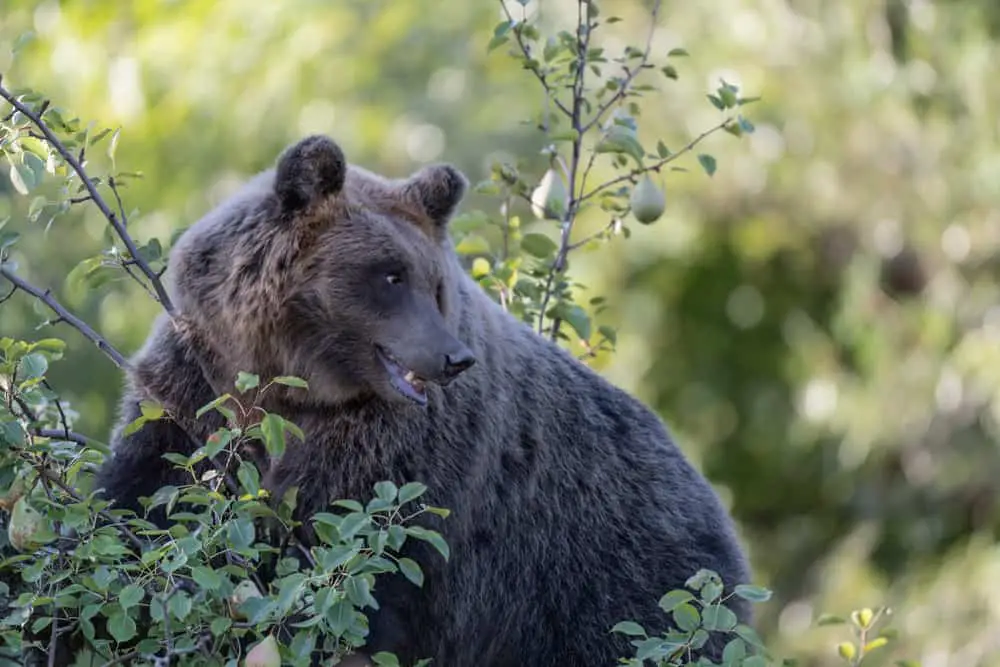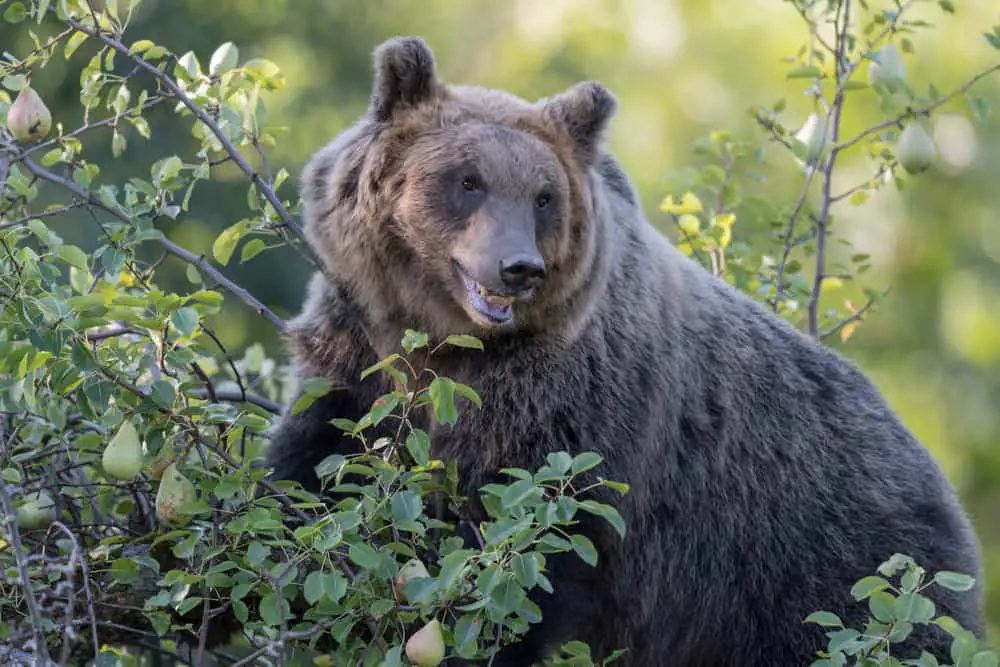The Marsican brown bear (Ursus arctos marsicanus) is a subspecies of the brown bear found in central Italy. As an apex predator, it plays a vital role in maintaining healthy ecosystems and its presence as part of the local biodiversity must be preserved.
Despite being listed as “vulnerable” on the IUCN Red List since 2015, this species faces serious threats to its survival due to hunting and habitat loss caused by human activities. It is therefore essential that conservation efforts are implemented to protect this unique wildlife species.
This article will provide an overview of the ecology, behavior, range and current status of the Marsican brown bear, drawing upon literature from both scientific research studies as well as traditional knowledge gathered from local communities. In addition, it will discuss potential strategies for conserving this species that have been proposed or implemented within its range.
Ultimately, understanding more about the biology and ecology of the Marsican brown bear can help guide effective management decisions for improving population recruitment and thus ensuring protection of this endangered species into future generations.

Distribution And Habitat
The marsican brown bear is a subspecies of the Eurasian brown bear, endemic to Italy. It primarily inhabits the Apennine Mountains and its range covers parts of Abruzzo, Lazio and Molise regions. Its habitat consists mainly of beech-fir forests in mountainous areas with altitudes between 500–2000 m above sea level.
Due to human activities, such as poaching and deforestation, this species has been declared “Critically Endangered” by the International Union for Conservation of Nature (IUCN). In addition to illegal hunting, other threats include road mortality caused by traffic collisions and lack of genetic diversity due to small population size. As a result, protective measures have been implemented in order to conserve the remaining individuals in their native range.
In particular, most of the marsican bear’s Italian habitat is included within Abruzzo National Park—the largest protected area in Europe. This has provided vital protection from hunters and poachers within its boundaries which allows the species room to roam safely without fear of persecution or interference from humans. Consequently, it remains one of the few places where this unique subspecies can still survive in its natural environment.
Description And Characteristics
The Marsican brown bear is a subspecies of the Brown Bear (Ursus arctos), native to Italy. It is known for its distinct physical characteristics, including coat color and muzzle shape.
In terms of their coat coloration, Marsican brown bears are typically dark in hue, ranging from black-brown to light yellowish-gray. In addition, they have relatively short fur compared to other species of brown bears; this helps them better regulate body temperature during hot summers. Their muzzle is also narrower than that of other subspecies, with an overall more pointed shape.
Size-wise, Marsican brown bears tend to be smaller than most other Brown Bears due largely to their isolated habitat in mountainous regions. They generally reach lengths between 1.4 m – 2 m and can weigh up to 130 kg as adults. The females are usually slightly smaller than males in size.
Overall, the Marsican brown bear has distinct physical characteristics which set it apart from other Brown Bears both in appearance and size. These features have helped them survive in the challenging environment of their mountain habitats over time and form part of what makes these animals so unique today.
Diet And Feeding Habits
The diet of the Marsican brown bear is mostly composed of vegetation, including grasses, roots and berries. As omnivores, these bears also feed on a variety of insects and small rodents as well. They can also be found foraging for honey in beehives when available. In springtime, they will feed mainly on fresh shoots and new buds from trees and shrubs.
During summer and autumn months, their main food sources are fruits such as blueberries and raspberries which are rich in carbohydrates.
In addition to consuming vegetation, Marsican brown bears have been observed scavenging carrion left behind by other animals or humans in some areas. These opportunistic creatures may even take advantage of garbage bins or human dwellings if accessible. Studies suggest that wild boar account for up to 20% of their prey intake during certain times of year if present.
Marsican brown bears normally spend around 15 hours per day searching out food sources while resting during daylight hours due to risk factors associated with hunting diurnally. This behavior has allowed them to survive despite major threats posed by habitat destruction caused primarily by human activities over time.
Behavior And Social Structure
Marsican brown bears are solitary in nature and exist as individuals or in pairs, with the exception of mother-cub dyads. They have a complex social system that includes interaction patterns between family members and other nearby bear populations. In some cases, multiple generations can be found living together.
The behavior of Marsican brown bears is influenced by their hibernation habits; they may become more active during months when food sources are scarce. During this time, they will interact with one another to find resources such as food or water.
Mating rituals also help shape their social structure: males compete for females while females choose mates based on size and strength. Cubs stay with their mothers until 2–3 years old, learning important survival skills along the way before going out into the world alone.
Interactions between different groups of Marsican brown bears vary depending on factors such as population density and availability of resources. Bears living in close proximity may show aggression towards each other if competing for limited resources, but otherwise tend to ignore one another’s presence unless provoked or threatened.
Generally speaking, communication within these species tends to involve vocalisations like growls, moans and huffs rather than physical contact or displays of dominance behaviour.
Breeding And Reproduction
Marsican brown bears usually breed in their second year of life. Females will produce cubs every two to three years and litters can consist of one or two cubs, but more commonly there are three. During the breeding season, males will compete with each other for access to a female bear’s territory.
The reproduction cycle of Marsican brown bears is as follows:
- In late winter/early spring, females come out of hibernation ready to mate
- By April/May they give birth while still in the den
- Cubs stay with mother until the fall when she drives them away before entering another period of hibernation
- Female marsicans may take up to six months to completely wean their young off milk
In order for successful rearing of their offspring, female bears must have ample fat reserves that she builds up during times of plentiful food sources throughout summer and fall. During this time, cubs learn feeding habits from their mothers which will be beneficial later on in life.
If resources become scarce at any point during this process, it could lead to difficulty for both mother and cubs if adequate strategies cannot be implemented by the female bear.

Threats And Conservation Status
The marsican brown bear is an endangered species, threatened by several factors. Hunting regulations have not been able to protect the population from human interference, leading to a decline in numbers. Furthermore, habitat destruction due to deforestation and land development has caused further decrease in the number of individuals remaining in their natural environment.
Climate change also poses a threat to this species. Extreme weather conditions can cause food shortages or lead to increased mortality rates among young bears. In addition, the construction of infrastructure such as roads may fragment habitats and limit the ability of individual animals to find mates and reproduce successfully.
In order for conservation efforts to be successful, it is essential that hunting regulations are enforced strictly, while simultaneously ensuring that habitat destruction is minimized. It is also important that measures are taken to reduce climate change effects on populations so that they remain viable into the future. By addressing these issues head-on, we can help ensure a safe future for this iconic animal and its unique place within Italian culture.
Interesting Facts
The Marsican brown bear (Ursus arctos marsicanus) is an endangered species of the brown bear subspecies endemic to Central Italy, particularly within Abruzzo National Park. As a result of its very limited range, this particular subspecies has been threatened with extinction for several decades due to population decline and habitat destruction.
| Behavior | Habitat | Diet |
|---|---|---|
| Hibernation period during winter months Social behavior includes solitary living or small groups Inactive at night but active during day time Mating season in spring from April-June | Forested mountain ranges between 656–8200 ft above sea level Forested valleys as well as grasslands | Herbivorous diet consisting mainly of nuts and berries such as raspberries and blueberries |
Due to their secretive nature, much about the life history of the Marsican brown bear remains unknown. However, it is known that they are active during summer months when food sources are plentiful and hibernate from late fall through early spring.
During hibernation periods they live in dens made out of tree trunks or holes dug into the ground. In terms of social behaviour, these bears typically lead solitary lives however there have also been observed cases where small groups form together around common feeding grounds.
Furthermore, these creatures tend to be inactive at night and more active during daytime hours which is most likely why sightings by humans remain so uncommon despite their diminishing numbers throughout central Italy’s mountainous regions.
The primary diet of the Marsican brown bear consists of fruits such as raspberries, blueberries, chestnuts and hazelnuts found in abundance in forested areas spanning from 656–8200 feet above sea level; while they will occasionally feed on insects and small animals if necessary.
During mating season occurring between April – June each year, males compete for female partners who can produce offspring up to twice per year after a gestation period lasting approximately 7 months before giving birth to cubs inside sheltered dens hidden deep within forests across Central Italy.
Overall, the Marsican Brown Bear stands today as one of only three remaining native mammal species endemic to Central Italy yet still struggling against threats both natural and human induced leading towards rapid population decline over recent decades.
Consequently conservation efforts are now underway aiming to protect these rare species facing possible extinction without immediate attention being given towards protecting existing habitats along with increasing public awareness surrounding potential risks posed by human activity encroaching upon their environment
Conclusion
Marsican brown bears are an important part of the Italian wildlife and environment. This species is endemic to central Italy, where they inhabit mountainous areas such as the Apennines, Abruzzo National Park and Majella National Park. The population of Marsican brown bears is small but relatively stable due to conservation efforts in recent decades.
The diet of these omnivores consists mainly of plant-based food sources including grasses, berries, nuts and insects. During mating season, males compete for a mate by exhibiting aggressive behaviour towards each other. Females then give birth to 1-4 cubs during winter months after a gestation period of 8 months.
In spite of preservation measures taken by local Governments and organisations, poaching remains a major threat that affects this species’ stability in its natural habitat. Additionally, human encroachment has caused significant changes in the landscape which makes it difficult for these animals to find enough resources for their survival. As such, continued awareness campaigns are essential to ensure the long-term protection of this unique animal species native to Italy.

